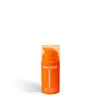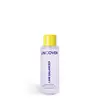What's inside
What's inside
 Key Ingredients
Key Ingredients

 Benefits
Benefits

 Concerns
Concerns

 Ingredients Side-by-side
Ingredients Side-by-side

Water
Skin ConditioningButylene Glycol
Humectant3-O-Ethyl Ascorbic Acid
Skin ConditioningGlycerin
HumectantDiethoxyethyl Succinate
SolventArbutin
AntioxidantDipropylene Glycol
HumectantGlycereth-26
HumectantMethylpropanediol
SolventPropanediol
Solvent1,2-Hexanediol
Skin ConditioningPanthenol
Skin ConditioningAmmonium Acryloyldimethyltaurate/Vp Copolymer
Chondrus Crispus Extract
Skin ConditioningPolyglyceryl-10 Laurate
Skin ConditioningSaccharum Officinarum Extract
MoisturisingGlyceryl Caprylate
EmollientSodium Citrate
BufferingXanthan Gum
EmulsifyingEthylhexylglycerin
Skin ConditioningCitric Acid
BufferingCitrus Aurantium Bergamia Fruit Oil
MaskingAllantoin
Skin ConditioningSodium Phytate
Adansonia Digitata Fruit Extract
EmollientCitrus Limon Peel Oil
MaskingBeta-Glucan
Skin ConditioningTocopherol
AntioxidantWater, Butylene Glycol, 3-O-Ethyl Ascorbic Acid, Glycerin, Diethoxyethyl Succinate, Arbutin, Dipropylene Glycol, Glycereth-26, Methylpropanediol, Propanediol, 1,2-Hexanediol, Panthenol, Ammonium Acryloyldimethyltaurate/Vp Copolymer, Chondrus Crispus Extract, Polyglyceryl-10 Laurate, Saccharum Officinarum Extract, Glyceryl Caprylate, Sodium Citrate, Xanthan Gum, Ethylhexylglycerin, Citric Acid, Citrus Aurantium Bergamia Fruit Oil, Allantoin, Sodium Phytate, Adansonia Digitata Fruit Extract, Citrus Limon Peel Oil, Beta-Glucan, Tocopherol
Water
Skin ConditioningPropanediol
SolventDiglycerin
HumectantGluconolactone
Skin ConditioningHydroxyethyl Urea
Humectant1,2-Hexanediol
Skin ConditioningSodium Citrate
BufferingTromethamine
BufferingPolyacrylate Crosspolymer-6
Emulsion StabilisingHydroxyethyl Acrylate/Sodium Acryloyldimethyl Taurate Copolymer
Emulsion StabilisingChlorphenesin
AntimicrobialBetaine
HumectantPolyglycerin-3
HumectantPanthenol
Skin ConditioningAllantoin
Skin ConditioningXanthan Gum
EmulsifyingLactobionic Acid
BufferingGlycerin
HumectantSorbitan Isostearate
EmulsifyingPolysorbate 60
EmulsifyingT-Butyl Alcohol
PerfumingSaccharomyces/Xylinum/Black Tea Ferment
Skin ConditioningSodium Hyaluronate Crosspolymer
HumectantHydrolyzed Glycosaminoglycans
HumectantButylene Glycol
HumectantSodium Hyaluronate
HumectantBenzyl Glycol
SolventHydrolyzed Hyaluronic Acid
HumectantAspalathus Linearis Leaf Extract
Skin ConditioningEthylhexylglycerin
Skin ConditioningHyaluronic Acid
HumectantWater, Propanediol, Diglycerin, Gluconolactone, Hydroxyethyl Urea, 1,2-Hexanediol, Sodium Citrate, Tromethamine, Polyacrylate Crosspolymer-6, Hydroxyethyl Acrylate/Sodium Acryloyldimethyl Taurate Copolymer, Chlorphenesin, Betaine, Polyglycerin-3, Panthenol, Allantoin, Xanthan Gum, Lactobionic Acid, Glycerin, Sorbitan Isostearate, Polysorbate 60, T-Butyl Alcohol, Saccharomyces/Xylinum/Black Tea Ferment, Sodium Hyaluronate Crosspolymer, Hydrolyzed Glycosaminoglycans, Butylene Glycol, Sodium Hyaluronate, Benzyl Glycol, Hydrolyzed Hyaluronic Acid, Aspalathus Linearis Leaf Extract, Ethylhexylglycerin, Hyaluronic Acid
 Reviews
Reviews

Ingredients Explained
These ingredients are found in both products.
Ingredients higher up in an ingredient list are typically present in a larger amount.
1,2-Hexanediol is a synthetic liquid and another multi-functional powerhouse.
It is a:
- Humectant, drawing moisture into the skin
- Emollient, helping to soften skin
- Solvent, dispersing and stabilizing formulas
- Preservative booster, enhancing the antimicrobial activity of other preservatives
Allantoin is a soothing ingredient known for its protective and moisturizingg properties. Because of this, it is often added to products with strong active ingredients.
Studies show higher concentrations of this ingredient can promote wound healing.
Though it can be derived from the comfrey plant, allantoin is produced synthetically for cosmetic products to ensure purity.
Learn more about AllantoinButylene Glycol (or BG) is used within cosmetic products for a few different reasons:
Overall, Butylene Glycol is a safe and well-rounded ingredient that works well with other ingredients.
Though this ingredient works well with most skin types, some people with sensitive skin may experience a reaction such as allergic rashes, closed comedones, or itchiness.
Learn more about Butylene GlycolEthylhexylglycerin (we can't pronounce this either) is commonly used as a preservative and skin softener. It is derived from glyceryl.
You might see Ethylhexylglycerin often paired with other preservatives such as phenoxyethanol. Ethylhexylglycerin has been found to increase the effectiveness of these other preservatives.
Glycerin is already naturally found in your skin. It helps moisturize and protect your skin.
A study from 2016 found glycerin to be more effective as a humectant than AHAs and hyaluronic acid.
As a humectant, it helps the skin stay hydrated by pulling moisture to your skin. The low molecular weight of glycerin allows it to pull moisture into the deeper layers of your skin.
Hydrated skin improves your skin barrier; Your skin barrier helps protect against irritants and bacteria.
Glycerin has also been found to have antimicrobial and antiviral properties. Due to these properties, glycerin is often used in wound and burn treatments.
In cosmetics, glycerin is usually derived from plants such as soybean or palm. However, it can also be sourced from animals, such as tallow or animal fat.
This ingredient is organic, colorless, odorless, and non-toxic.
Glycerin is the name for this ingredient in American English. British English uses Glycerol/Glycerine.
Learn more about GlycerinPanthenol is a common ingredient that helps hydrate and soothe the skin. It is found naturally in our skin and hair.
There are two forms of panthenol: D and L.
D-panthenol is also known as dexpanthenol. Most cosmetics use dexpanthenol or a mixture of D and L-panthenol.
Panthenol is famous due to its ability to go deeper into the skin's layers. Using this ingredient has numerous pros (and no cons):
Like hyaluronic acid, panthenol is a humectant. Humectants are able to bind and hold large amounts of water to keep skin hydrated.
This ingredient works well for wound healing. It works by increasing tissue in the wound and helps close open wounds.
Once oxidized, panthenol converts to pantothenic acid. Panthothenic acid is found in all living cells.
This ingredient is also referred to as pro-vitamin B5.
Learn more about PanthenolPropanediol is an all-star ingredient. It softens, hydrates, and smooths the skin.
It’s often used to:
Propanediol is not likely to cause sensitivity and considered safe to use. It is derived from corn or petroleum with a clear color and no scent.
Learn more about PropanediolSodium Citrate is the sodium salts of citric acid. In skincare, it is used to alter pH levels and acts as a preservative.
Its main functions are to maintain the pH of a product and neutralize metal ions.
The acidity of our skin is maintained by our glands and skin biome; normal pH level of skin is slightly acidic (~4.75-5.5).
Being slightly acidic allows our skin to create an "acid mantle". This acid mantle is a thin barrier that protects our skin from bacteria and contaminants.
Learn more about Sodium CitrateWater. It's the most common cosmetic ingredient of all. You'll usually see it at the top of ingredient lists, meaning that it makes up the largest part of the product.
So why is it so popular? Water most often acts as a solvent - this means that it helps dissolve other ingredients into the formulation.
You'll also recognize water as that liquid we all need to stay alive. If you see this, drink a glass of water. Stay hydrated!
Learn more about WaterXanthan gum is used as a stabilizer and thickener within cosmetic products. It helps give products a sticky, thick feeling - preventing them from being too runny.
On the technical side of things, xanthan gum is a polysaccharide - a combination consisting of multiple sugar molecules bonded together.
Xanthan gum is a pretty common and great ingredient. It is a natural, non-toxic, non-irritating ingredient that is also commonly used in food products.
Learn more about Xanthan Gum